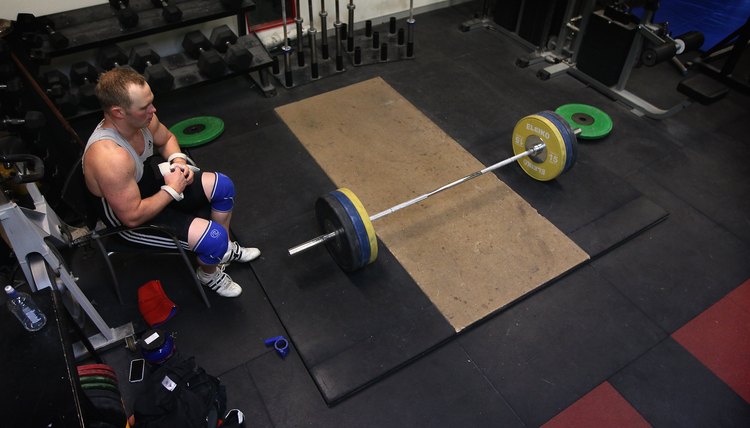Deadlifts for Tight Hip Flexors

The deadlift is often referred to as a full-body or integrated exercise, as it works so many muscles -- your hamstrings, glutes, lower and mid-back, core, forearms, biceps and traps. It's also one of the three powerlifts, along with bench presses and squats, and is a highly effective exercise for building muscle, boosting strength and increasing lower-body speed and power. However, you may struggle to perform deadlifts correctly if you have tight hip flexors.
Setting Up for the Deadlift
To perform a regular deadlift, stand with your feet directly underneath a barbell and spaced shoulder-width apart. Grab the bar with both hands just outside of your legs and bend your knees a little until your shins make contact with the bar. Lower your hips and lift your head and chest up until your back is flat -- this is known as a neutral spine position. Pull the bar from the floor by straightening your legs and pushing your hips forward, until you're standing upright. Keep your spine neutral throughout the lift.
Hip Flexor Tightness
Hip flexor tightness is a common problem, according to the American Council on Exercise. When you're sitting down your hip flexors are constantly in a shortened position. If you have a sedentary job sitting at a desk or spend a lot of time driving, your hip flexors will be short and tight, which can limit your mobility and also leave them more prone to sprains and strains.
Issues with Deadlift Technique
Tight hip flexors are the reason many people find their hips shoot up and their lower back rounds as soon as they lift the barbell off the floor, claims powerlifter and corrective exercise specialist Mike Robertson, owner of Indianapolis Fitness and Sports Training. Tight, overactive hip flexors can also inhibit glute strength, notes strength coach Eric Cressey in his article "Fixing the Flaws: Weak Posterior Chain." If your glutes are underactive, you'll struggle to push your hips through and lock out your deadlift at the top of the movement.
Considerations
The best option is to work on loosening your hip flexors through a combination of stretching, foam rolling and sports massage. Add glute-strengthening exercises such as glute bridges, step ups and reverse lunges to increase glute activation and improve your strength in the top portion of the deadlift. You can still deadlift while you're working on correcting your hip flexor issues, though you may wish to lower the weight to ensure perfect technique, or try deadlifts with the bar in an elevated starting position, so it's easier to maintain your form.
References
Writer Bio
Mike Samuels started writing for his own fitness website and local publications in 2008. He graduated from Peter Symonds College in the UK with A Levels in law, business and sports science, and is a fully qualified personal trainer, sports massage therapist and corrective exercise specialist with accreditations from Premier Global International.
